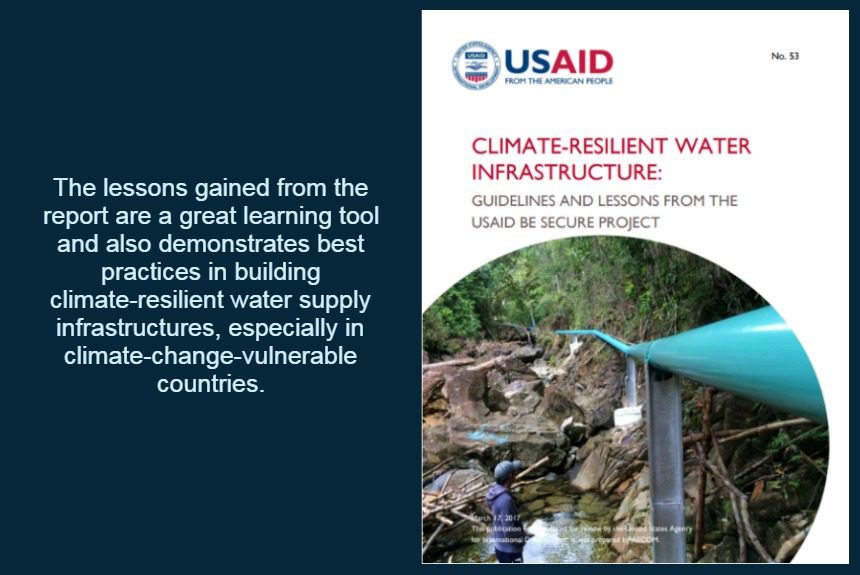This report compiles the range of best practices in infrastructure design in the Philippines and describes how infrastructure was damaged by climate-related events like storm Yolanda and droughts during El Niño periods.
It shares the USAID (United States Agency for International Development) Be Secure project’s experience in building climate-resilient water supply infrastructure, which served as a guide to Water Services Providers (WSP) and Local Government Units (LGUs) in the Philippines.
Below are some highlights from the report:
- Climate change impacts that threaten the structural integrity and service sustainability of water supply infrastructure in the Philippines from these climate hazards: increased and intense precipitations; high winds; storm surge; sea-level rise; drought or decreased annual rainfall; increased mean annual temperatures, extreme heat, and heat waves; and wildfires.
- The sensitivity of material used in water supply construction uses the findings from post-Yolanda damage assessments.
- Strategic approaches to climate change adaptation
- Climate change adaptation options for water infrastructure for different climate drivers.
- Examples of climate-resilient repairs, construction, and other adaptation measures implemented by Be Secure.
The lessons gained from the report are a great learning tool and demonstrate best practices in building climate-resilient water supply infrastructures, especially in climate-change-vulnerable countries.
Source:
Climate-Resilient Water Infrastructure: Guidelines and Lessons from the USAID Be Secure Project. (2017, May 17). United States Agency for International Development. AECOM. Retrieved from https://www.climatelinks.org/sites/default/files/asset/document/2017_USAID_Climate-Resilient%20Water%20Infrastructure%20-%20Guidelines%20and%20Lessons%20from%20the%20USAID%20Be%20Secure%20Project.pdf



Leave a Reply